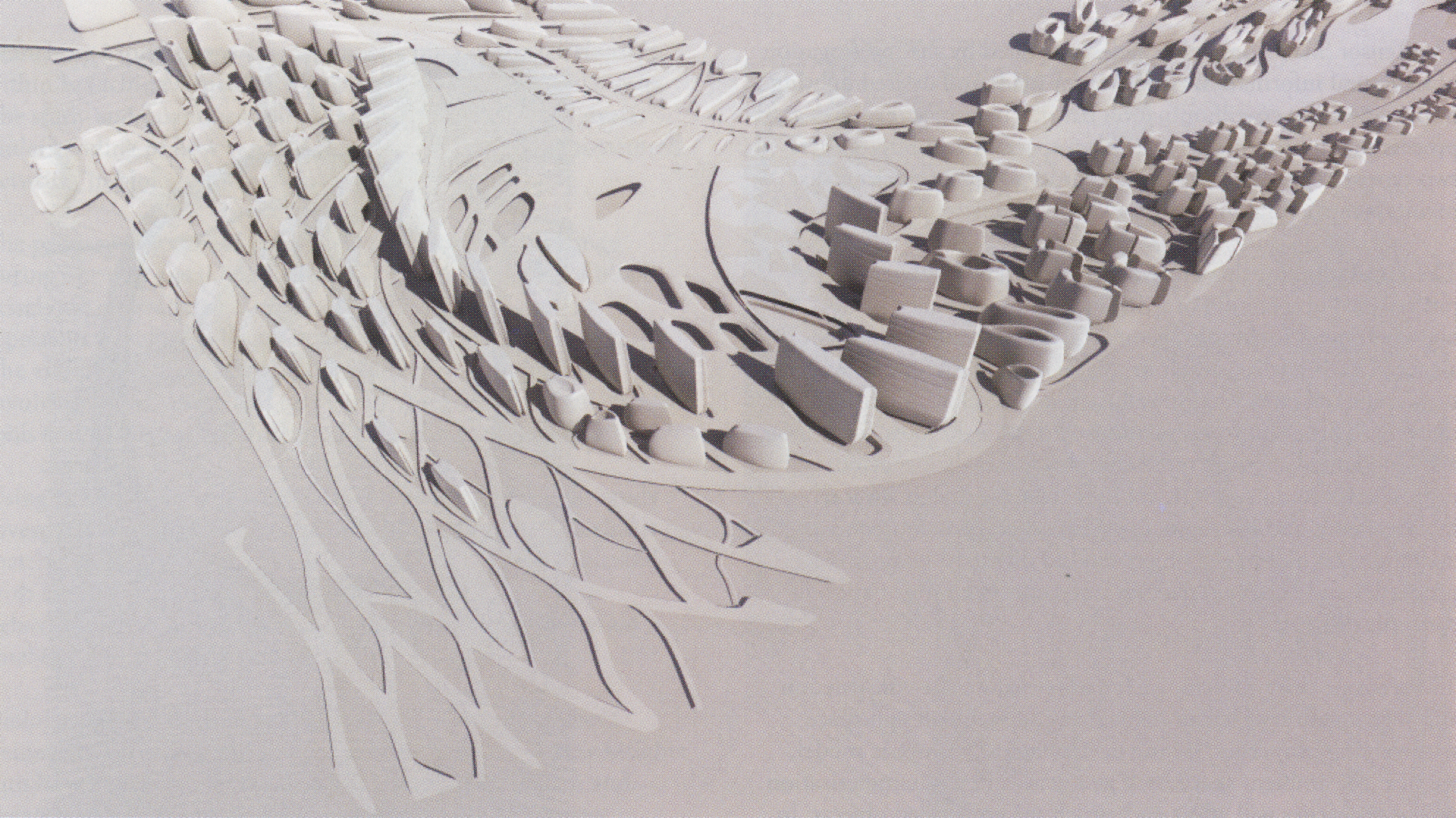Nils Fischer: Parametric Urbanism, Procedural Complexity
Artist(s):
Title:
- Parametric Urbanism, Procedural Complexity
Exhibition:
Creation Year:
- 2008
Category:
Artist Statement:
Zaha Hadid Architects (ZHA) uncovers internal correlations and recursive relationships in its design practice at multiple scales, from the detailed to the urban. ZHA is systematically searching for parameters, laws of change, and tools for generating complexity to shift how architects approach form making and space design.
Parametric Urbanism
This project recruits powerful digital-design techniques to produce form and make urban spaces with an architect’s sensibility. The design team uses recursive Maya scripts to generate a pattern that responds to varying environmental parameters. The result is a complex field for an urban context. The first step is to reconstruct the fundamental typological catalog of architecture and urbanism in terms of field conditions: point fields of villas, line fields of towers, plane fields of slabs, and volume fields of urban blocks. The second step calls for a series of parametric variations. In the final step, the designers play a “matrix game” of recombination and interpenetration that generates the richness and complexity that makes an urban territorial strategy.
ZHA has experimented with this approach in real-world projects at the Thames Gateway in London, in Istanbul, Turkey, in Singapore, and in Appur, India.
Procedural Complexity
ZHA’s in-house research group, the Computation and Design Group, brings designers and programmers together to develop specialized tools for generating spatial and experiential complexity in geometry. The group is experimenting with topological complexity, cellular logics, and field structures, among other domains. These explorations have resulted in new tools that are available to all the end-users at ZHA for projects at any stage of development. In other words, the tools address the entire design process from end to end and underscore the recursive nature and inner correlations that are a hallmark of ZHA’s design.





